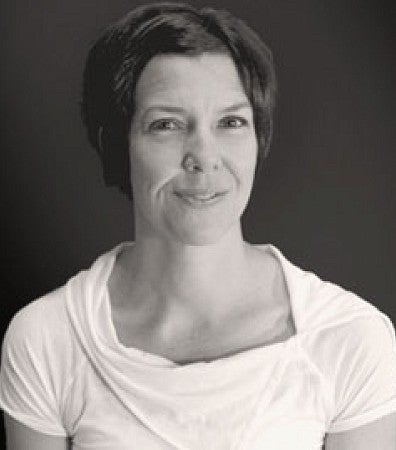Last October, eighty-five children from Willagillespie Elementary School in Eugene contracted the norovirus, a nasty stomach bug that causes vomiting and diarrhea. A Lane County public health official said in The Register-Guard that there’s no way to stop it from spreading throughout the school. “It’s out there in the community . . . . You can get it from almost anything, a handrail, a doorknob . . . I don’t think you can contain it.”
Controlling infectious agents that lurk where we live is exactly what a group of UO professors plan to do. With a $1.8 million grant from the Alfred P. Sloan Foundation, Jessica Green, an associate professor of biology, G. Z. “Charlie” Brown, an architecture professor, and Brendan Bohannan, director of the UO Center for Ecology and Evolutionary Biology, will create the Center for Microbial Ecology of Indoor Environments.

But scientists do know that poor air quality causes infections to spread where people gather. Schools, hospitals, offices, and cruise ships are sites where all-too-regularly outbreaks of bacterial and viral infections cause problems for the people in those environments. “Although humans in industrialized countries spend nearly 90 percent of their time in enclosed buildings, we know very little about the biology of the indoor environment,” says Green, an engineer turned biologist who will be the director of the center.
She believes that the shapes of rooms, their temperature and humidity, floor and wall coverings, furniture, natural and fluorescent lighting levels, and patterns of foot traffic all influence the growth and spread of indoor microbial communities, which includes airborne pathogens. And when ventilation systems are designed without consideration for this microbial miasma, they can inadvertently spread infectious agents. People can become infected with methicillin-resistant Staphylococcus aureus (MRSA), the swine flu, and the norovirus. Armed with a better understanding of the indoor microscopic world, Green hopes to improve sustainable building designs, including the creation of more energy-efficient, pathogen-resistant ventilation systems, to minimize the spread of airborne bugs. Saving lives is her ultimate goal.
Reaching that goal will require a multidisciplinary team, from molecular biologists characterizing microbial ecosystems—what Green calls “the built environment microbiome”—to engineers designing improved ventilation systems and architects constructing more healthful, sustainable buildings. “One of our great challenges will be to not only understand what shapes microbial biodiversity in the built environment, but how these complex microbial communities influence our health and well being,” Green says. “If we can design buildings to maximize the abundance of the many types of microbes we need and that are good for us, this would be truly cutting edge.”
The center’s innovation and potential to save lives impressed the Alfred P. Sloan Foundation enough to fund it. “The University of Oregon and Jessica Green have put together a first-class team of researchers to carry out a very ambitious research program,” says Paula J. Olsiewski, the program director in charge of Sloan’s indoor environment program. “Every major grant proposal undergoes a rigorous evaluation process and is reviewed by an independent panel of experts. In this case, the foundation’s scientific advisory panel enthusiastically recommended we fund the University of Oregon center. The possibilities for discovery are too great to ignore.”
With as many as a million bacteria per cubic meter in any given room, it’s not surprising that protocols to investigate built environment microbiomes are complicated. Initial experiments will take place at the Providence Milwaukie Hospital near Portland. To identify airborne microbes, UO scientists will collect air samples from rooftop exhaust fans in both occupied and unoccupied rooms. They will swab corresponding interior surfaces.
Using genetics tests, the center’s molecular biologists will characterize airborne and surface microbial and fungal populations for each space. Center architects will identify the hospital’s key elements—building and room geometry, window size and location, surface materials, and airflow rates from supply and exhaust fans—as well as inside and outside temperature and humidity.
The second phase of experimentation will add building function and geographic location into the mix. Researchers will repeat experiments in a variety of schools and hospitals in both Portland (mild temperatures with high humidity) and Bend (high and low temperatures with low humidity). Green and her colleagues ultimately hope to gather enough information to design animation software programs, allowing scientists and architects to visualize indoor microbial ecosystems.
Architecture professor Charlie Brown will be focusing on the link between the indoor microbiome and sustainable building design. He directs the UO’s Energy Studies in Buildings Laboratory, which develops energy-efficient components for sustainable buildings.
He’s particularly interested in optimizing building ventilation systems. Most buildings bring air in from the outside and either heat or cool it, he says. It’s an energy-intensive process, consuming 20 percent of commercial buildings’ energy. Brown wants to see that number significantly reduced by designing natural ventilation systems that will cut greenhouse gas emissions. “We have to save the planet, then save the people,” he says. His hope is that natural ventilation, by virtue of sustainability and reducing airborne pathogens, will do both.
With no other research group studying the influence of building design on microbial abundance and diversity, the UO’s new Center for Microbial Ecology of Indoor Environments is putting green architecture at the forefront of scientific discovery. The beauty is in the collaboration between biologists and architects, Brown says. “In the end, both biologists and architects will learn things about building design that neither group could have learned independently.”
—By Michele Taylor MS ’03, ’10


